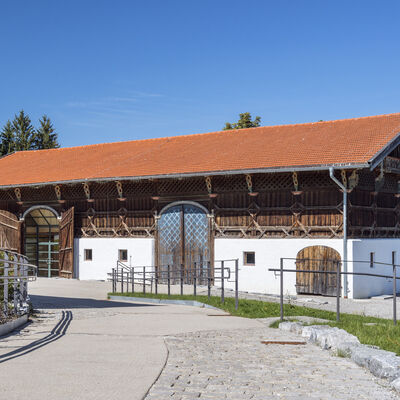E2 Bundwerk barn from Starkern
House name "Starkerer"
District: Altötting
Municipality: Tyrlaching
Year of Construction: 1855
Type of Building:
barn
The Starkerer barn is superficially one of the most beautiful barns in Upper Bavaria. The façade (south side and east pediment) are decorated with opulent Bundwerk and imaginative carvings. The barn’s four large doors are also richly designed. As some conclusive remains of the original ornamental painting had been preserved, it was possible to reconstruct the original Colours.
The Starkerer building was a stately four-sided farm to which roughly 22 hectares (forest, meadow and arable land) belonged. The large barn, built in 1855, is a testament to the importance of grain farming at that time. The laden harvest wagons would be driven through the gigantic, double barn doors and unloaded.
The barn was also used as a threshing floor, where the grain would have been threshed manually with flails until the 1920s, and by machine thereafter. Grain and straw were stored in the barn, with an integrated corn store to hold the threshed grain. The farm moved on to pure dairy farming in the 1960s. The more recent history of the whole property is symptomatic of the structural change which has taken place in agriculture, meaning that the traditional farm building became surplus to requirements regardless of its size.


